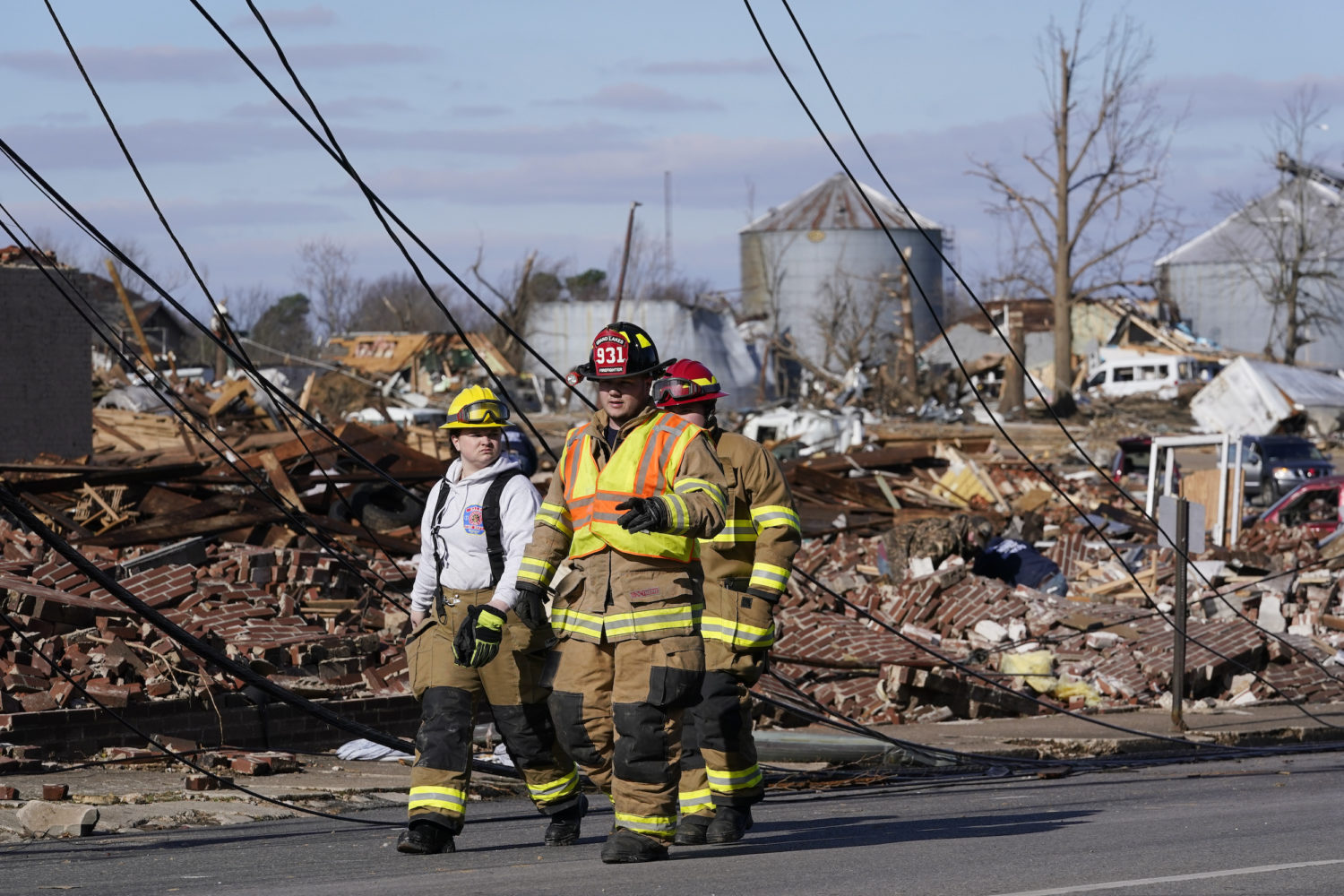Journalists are rising to another disaster that will unfold for months. Weather experts say that four tornadoes likely cut through Kentucky overnight. Instead of families gathering for Christmas, many will gather for funerals. By some estimates, the death toll will reach 100.
The damage stretches from the western part of the state all the way to Bowling Green, which is close to 140 miles east. Factory roofs collapsed; trees pierced rooftops. Many of the communities in that part of Kentucky are served by understaffed fire and ambulance teams.
Social media sites are peppered with videos of neighbors searching for neighbors.
WPSD (Paducah) news director Perry Boxx summed up the weeks ahead to me.
“We have big sections of whole towns gone. We don’t even know how bad some places were hit. We have crews everywhere, and they were already exhausted before this.”
Some of the first images of damage from Mayfield, Kentucky were captured by WPSD vice president and station manager Bill Evans, who was a longtime journalist before moving to the front office.
I can offer some advice for the days ahead:
Out of town crews: Stay out of the way and cause no harm. Do nothing that will put yourself in harm’s way. Emergency crews have enough to tend with without having to rescue you.
Stay on the story: One thing I know to be true about news coverage is that more coverage leads to more help. When you quit covering a story, the country’s attention moves on, especially in a holiday season when the public needs a break from sad news.
Avoid stereotypes: I grew up in the part of Kentucky that is suffering today. I know each of these communities intimately. I cannot tell you how grating it is when I see big-city journalists portray Kentuckians as backwater hicks. Be kind.
Keep asking why: I searched Kentucky tornado fatality statistics for the last several decades. In 2012, 23 Kentuckians died in the storm or soon after. This storm will be compared to the storms of April 1974, which claimed 72 lives and hurt around 1,500 others. That storm was east and west of Louisville. March storms in 2012 caused more than $150 million in damage but no deaths. The tornado project tracks the history of tornadoes for every Kentucky county. I did find a reference to a tornado that hit Graves County (Mayfield) in 1967 on Dec. 11, this very date. Some of the counties that lost lives have no record of any fatalities from tornadoes going back decades. The state averages about 21 tornadoes a year.
Throughout history, nearly all of the storms were springtime events. Click on this chart to get details:
Check charities before you send people to them: The sad truth is that irresponsible charities and opportunists will swoop in. Before you link to any charity, at minimum, pull their Form 990 report to see how much they spend on operations, fundraising and “programs.” Program spending is what they spend on the actual purpose of their being. Guidestar and Charity Navigator are two places to start.
Urge people to avoid donating useless items: It sounds so cold to urge people to donate money and not things like baby clothes, but emergency services can purchase supplies in massive quantities for far less than you can buy them. Time and again charities tell stories of having to sort through useless junk, dirty clothes, worn-out shoes and even medicine.
Think forward: Covering disasters involves thinking forward and looking backward. You can get so caught up in capturing images of what was lost that you can ignore covering what the public needs next. What are the housing needs for people who have lost homes in rural areas? They don’t have hotels to move into for months. You can bet many do not have insurance to cover the damage. Businesses rely on the holiday season to create enough revenue to survive the rest of the year. What happens when people leave, when the business is damaged? How will understaffed volunteer emergency teams keep going long term?
Look for the light: The best of humankind can emerge in the worst situations. Tell those stories, too. There will be incredible acts of generosity, heroism and dedication. The public needs to see these and you need to tell those stories.
Take care of your own mental health: Journalists, you have been through the grinder in the last two years. You covered a racial reckoning and emotionally draining trials. You covered the pandemic while your children stayed home from school and you worried about aging parents. You covered an insurrection in the nation’s capital. You worried about your job and endured public scorn. You covered school shootings and a head-shaking election cycle. You have done all of this stuck at home, often working without the face-to-face support of your colleagues. For the next few weeks, you will see people cry over all they lost, you will hear heartbreaking stories of people who died, and it will hurt every time. You will get through it because it is what you do. But sometime — you decide when — you are going to have to stop and deal with what you feel. That is not weakness, it is strength. Notice when your colleagues are hurting and reach out to them. Check on your bosses, too.
More from Poynter:
- How a local radio station is helping a tornado-battered Kentucky community put itself back together
- Meet the local news meteorologist whose forecast saved lives in Kentucky
- CNN anchor Pamela Brown isn’t just covering the tornado damage in Kentucky. She’s reporting on her home.
- Reporters and photojournalists share stories from the 60-mile path of tornado destruction in Kentucky
- How the media is covering the horrific scene in Kentucky








